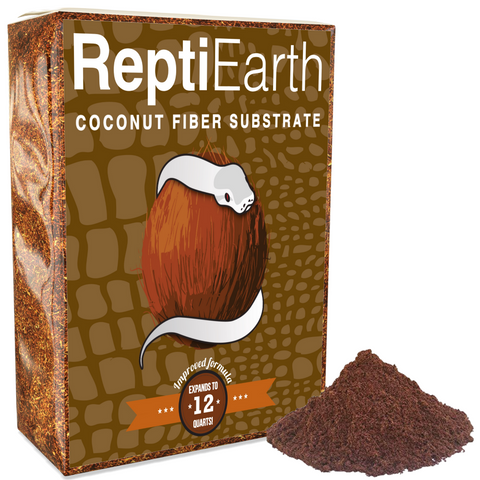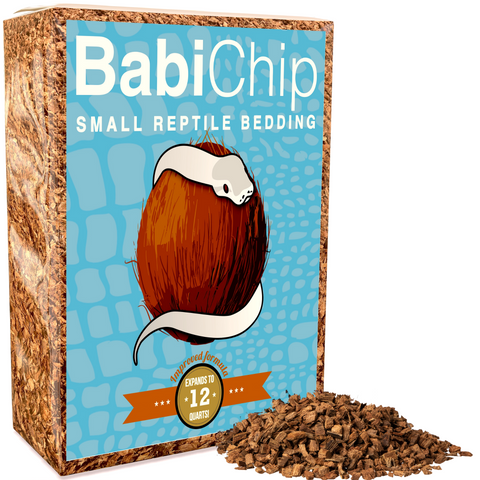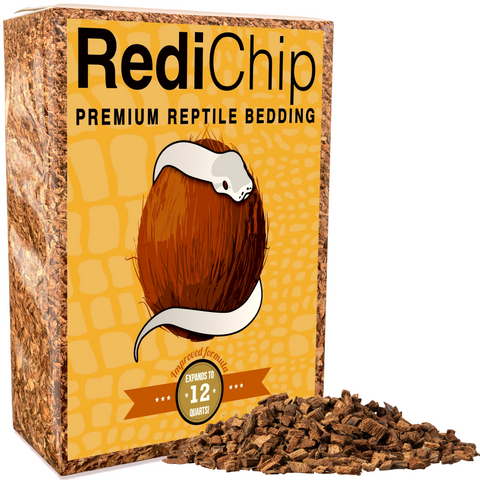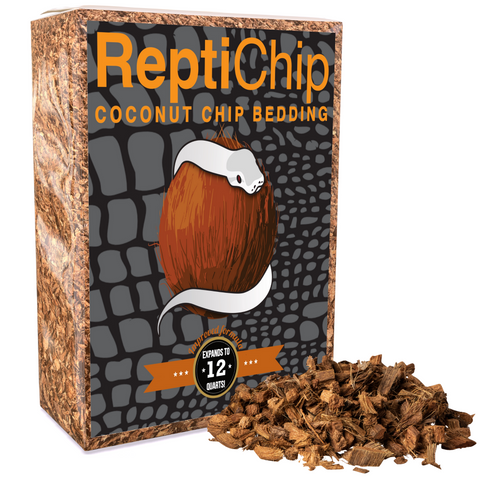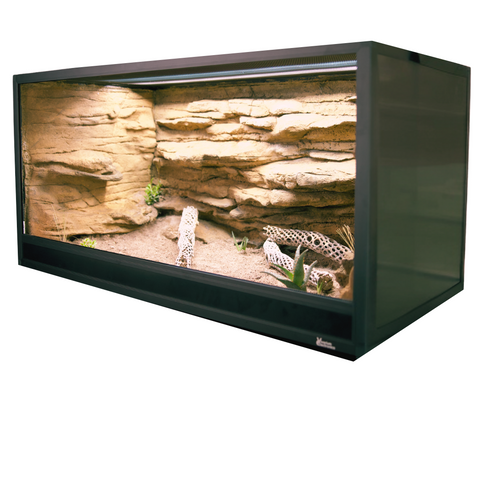Natural History
The Brook's kingsnake is a nonvenomous colubrid native to Florida. It thrives in various habitats, including pine flatwoods, hardwood hammocks, scrublands, and agricultural fields. Adaptable and opportunistic, it can also be found in disturbed areas, such as suburban neighborhoods and drainage canals. This species is well known for its resilience and versatility, which contribute to its success in both wild and captive environments.
The life cycle of the Brook's kingsnake begins with its emergence from an egg, as this species is oviparous. Females typically lay clutches of 5 to 25 eggs in late spring or early summer, depositing them in rotting logs, under leaf litter, or in other warm, humid environments that provide stable incubation. The eggs hatch after an incubation period of approximately 55 to 70 days, depending on temperature conditions. Hatchlings measure around 10 to 14 inches in total length and begin feeding on appropriately sized prey shortly after their first shed, which occurs within the first week of life. Growth is relatively rapid in the early years if food availability is high, with individuals reaching sexual maturity between two and four years of age. Adult Brook's kingsnakes can range from 3 to 5 feet in total length, though some individuals may exceed this. In captivity, where conditions are optimal, they frequently live beyond 15 years, with some recorded cases surpassing 20 years.
Brook's kingsnakes exhibit a variety of fascinating behaviors that highlight their adaptability as both predators and prey. They are primarily terrestrial but may climb in search of food or shelter. Their activity patterns can be influenced by temperature and food availability, with individuals displaying crepuscular and nocturnal tendencies in hotter months, while becoming more diurnal in cooler periods. As opportunistic constrictors, they subdue their prey by coiling around and suffocating it before swallowing it whole. One remarkable behavioral trait of this species is its immunity to the venom of native pit vipers, such as rattlesnakes and cottonmouths, allowing it to prey upon venomous snakes without harm. In addition to snakes, their diet includes small mammals, lizards, birds, and amphibians. Being solitary by nature, they do not exhibit social behaviors beyond interactions during the breeding season, when males may compete for access to receptive females. Like other kingsnakes, they rely on a suite of defensive strategies when threatened, including musk secretion, rapid body movements, hissing, and occasionally mimicking the appearance of venomous species through body contortions. Bite attempts are rare, as they typically rely on escape and intimidation rather than aggression.
Ecologically, the Brook's kingsnake plays a crucial role in controlling populations of small vertebrates, particularly rodents and other snakes. By preying on potential pest species, they contribute to the balance of their ecosystems, helping to regulate prey populations and prevent outbreaks that could harm native vegetation or agricultural areas. Their capacity to consume venomous snakes also has ecological significance, as it helps control the distribution and population density of these potentially dangerous species. In turn, Brook's kingsnakes are preyed upon by larger snakes, birds of prey, and some mammals, including raccoons and foxes. As with many reptiles, habitat destruction and road mortality are significant threats in their native range, though their adaptability has allowed them to persist in many human-altered landscapes. Their ability to withstand a range of environmental conditions, along with their nonvenomous nature and striking coloration, has made them a popular choice among reptile keepers and conservation enthusiasts alike.
Conservation Status
The Brook’s kingsnake (Lampropeltis getula brooksi) is not individually assessed on the IUCN Red List. Instead, it is recognized as a subspecies of the common kingsnake (Lampropeltis getula), which is currently listed as Least Concern. This broader designation reflects the stability and wide distribution of the parent species across much of the southeastern United States. However, because subspecies-level data are not evaluated separately, the true conservation outlook for the Brook’s kingsnake specifically remains less clear. With its distribution limited to southern Florida, the subspecies occupies a much narrower and more vulnerable range compared to the species as a whole. As such, localized pressures may pose significant risks that would not necessarily be reflected in the IUCN’s species-wide assessment.
Habitat loss remains the most pressing challenge for Brook’s kingsnakes. Rapid urban expansion and agricultural development in Florida continue to fragment and reduce critical ecosystems such as pine flatwoods, cypress strands, and wet prairies. These habitats provide essential shelter and prey resources, and their loss has direct impacts on local snake populations. Road mortality further compounds these pressures, as snakes frequently fall victim to vehicle strikes in areas where roadways intersect with natural habitats. The presence of invasive species, particularly the Burmese python, has also disrupted ecological balances in Florida and may affect prey availability for kingsnakes. Additionally, collection for the reptile trade historically reduced some populations, though widespread captive breeding has since lessened demand for wild-caught individuals.
Current conservation support for the Brook’s kingsnake primarily comes indirectly through habitat protection efforts in Florida. State parks, wildlife management areas, and preserves safeguard portions of its range, reducing pressures from habitat loss and collection. Public education initiatives also play a role in fostering appreciation for kingsnakes, which are valuable in controlling rodent and other small vertebrate populations. Captive breeding programs not only reduce pressure on wild populations but also serve as a genetic safeguard should localized declines occur.
While no targeted reintroduction or subspecies-specific conservation programs exist, the limited range of the Brook’s kingsnake highlights the importance of continued monitoring. Its dependence on Florida’s increasingly threatened ecosystems suggests that more focused research is needed to assess population trends and conservation status at the subspecies level. Until such evaluations are conducted, it is difficult to gauge the long-term stability of this distinctive kingsnake.
Native Range
The Brook’s kingsnake (Lampropeltis getula brooksi) is a subspecies of the common kingsnake, and unlike its widespread relatives, it is endemic to peninsular Florida. Its range is relatively restricted, extending southward from around Lake Okeechobee through the Everglades and into parts of the Florida Keys. While closely related kingsnake subspecies occupy large portions of the southeastern United States, the Brook’s kingsnake is confined to Florida’s subtropical landscapes, giving it a narrower ecological footprint.
Within this range, Brook’s kingsnakes thrive in a variety of low-elevation habitats, including pine flatwoods, cypress swamps, wet prairies, hardwood hammocks, and coastal scrub. They are adaptable snakes and can also be found in disturbed areas such as agricultural lands, canal edges, and even suburban environments. Like other kingsnakes, they seek cover in microhabitats that provide both protection and hunting opportunities — rotting logs, palmetto thickets, leaf litter, animal burrows, and beneath surface debris. In sandy regions, they may burrow to escape predators and regulate temperature.
Florida’s climate plays a big role in shaping their activity patterns. Warm, humid conditions dominate much of their range, with summer temperatures frequently reaching 80–95°F and mild winters occasionally punctuated by cold snaps. These snakes may undergo short-term brumation during colder periods, retreating underground until conditions stabilize. Seasonal rainfall, particularly the heavy summer wet season, influences both habitat conditions and prey availability.
Because the Brook’s kingsnake is a subspecies with a localized distribution, its persistence is closely tied to Florida’s environmental health. Habitat loss from urbanization, agriculture, and road expansion poses a significant threat, fragmenting ecosystems such as pine flatwoods and wetlands that are critical to the species. Despite their adaptability, stable populations rely on access to diverse prey, including small mammals, reptiles, and amphibians, as well as intact habitat providing cover and foraging space.
Behavior
Brook's kingsnake is a primarily nocturnal species, though it may exhibit crepuscular and diurnal tendencies, particularly during cooler months in its natural range. In the wild, activity levels vary seasonally, with peak movement occurring in spring and early summer when temperatures are optimal for foraging and breeding. During cooler months, particularly in the northern extents of its distribution, individuals may enter a state of brumation, retreating to underground refuges or other insulated microhabitats to conserve energy. In captivity, activity patterns are largely influenced by husbandry conditions, particularly temperature and light cycles, with well-maintained enclosures allowing for behaviors similar to those observed in the wild.
This species is largely solitary and does not engage in social interactions outside of breeding. Individuals are known to be territorial, particularly in resource-rich areas where competition for shelter and food may be high. During breeding season, males actively seek out receptive females using chemosensory cues, often engaging in combat with rival males in the form of wrestling and dominance displays. Copulation is typically brief, and females do not exhibit parental care beyond selecting an appropriate nesting site for egg deposition. Once eggs are laid, the hatchlings are entirely independent, dispersing quickly after emergence.
Brook's kingsnakes exhibit acute sensitivity to environmental stimuli and rely heavily on their well-developed sense of smell, facilitated by the vomeronasal organ, to detect prey and conspecifics. They also possess excellent vision, particularly adapted to detecting movement in low-light conditions. Environmental changes, such as fluctuations in temperature or humidity, directly influence activity levels, with individuals adjusting their behavior accordingly to seek thermal gradients for optimal digestion and metabolic function. When exposed to potential threats, their primary defensive behaviors include rapid retreat, cloacal musk secretion, and mimicry of venomous snakes, such as the rattlesnake, by vibrating their tails against substrate to produce a hissing sound. Unlike more defensive colubrids, Brook's kingsnake rarely resorts to biting unless severely distressed or provoked.
One of the most distinctive behaviors of this species is its feeding strategy. As an opportunistic generalist, it readily preys upon rodents, lizards, amphibians, and other snakes, including venomous species such as rattlesnakes and copperheads. This ability is due to an inherent resistance to certain snake venoms, a trait that allows it to exploit a niche food source with minimal competition. Prey is subdued using powerful constriction, and individuals display a characteristic rapid coil-tightening response that ensures effective suffocation. In captivity, they readily consume pre-killed rodents, though enrichment techniques, such as scent trailing, can encourage more naturalistic hunting behaviors.
Behavioral differences between wild and captive individuals are largely influenced by environmental consistency, stimulation, and handling frequency. In captivity, they often appear more docile due to repeated exposures to human interaction, though individuals that are infrequently handled may retain a more defensive disposition. Unlike their wild counterparts, captive specimens are exposed to a regular feeding schedule, which may reduce natural hunting behaviors and contribute to obesity if not carefully managed. Enrichment, such as varied enclosure layouts, climbing opportunities, and occasional fast periods, can help mitigate these differences, ensuring that their behavioral and physiological needs are met within a controlled environment.
Captivity Requirements
Enclosure Design
Proper enclosure design is critical for maintaining the health and well-being of this species, which requires a secure and appropriately sized habitat that replicates its natural environment. Juveniles can be housed in enclosures as small as 24”x18”x18”. A 36” x 18” x 18”enclosure is considered the standard for an adult, though a larger footprint is always beneficial. Securely latched screen-topped glass or PVC enclosures work well, as screen tops allow for proper ventilation while the rigid structure prevents collapse or escape. PVC enclosures are particularly advantageous for maintaining stable temperature and humidity levels, which this species benefits from.
The enclosure should include a variety of features to encourage natural behaviors. This species is a primarily terrestrial snake, but it will make use of climbing structures when available. Branches and sturdy hides should be placed throughout the habitat to allow for exploration, climbing, and security. At least two hides—one placed in the warm zone and another in the cooler section—should be provided to ensure the snake feels secure while thermoregulating. A basking area should be placed on the warm side of the tank, ideally utilizing a flat rock or similar heat-absorbent material to help maintain warmth. Artificial plants or cork bark can further enhance the habitat by offering additional cover, reducing stress, and promoting exploratory behaviors.
Security is a key concern with this species, as it is an active and inquisitive snake that is known for its ability to escape through small openings. Enclosures should have tightly fitting sliding or latching lids to prevent escapes. Any ventilation holes should be small enough to prevent the snake from squeezing through, as even slight gaps can be exploited. If using a glass terrarium with sliding doors, a secure lock is recommended to prevent the snake from pushing the doors open. Ensuring all structural components are tightly fitted and that the habitat is escape-proof is essential for responsible husbandry.
Lighting and Heating
A properly maintained thermal gradient is crucial for the health of this reptile, allowing it to regulate its body temperature as needed. The optimal temperature range should include a basking spot maintained at 85-90°F, while the ambient temperature of the enclosure should remain between 75-80°F during the day. At night, temperatures can drop to around 70-75°F without issue, but prolonged exposure to lower temperatures can result in decreased activity and digestion issues. Heating can be provided using an Radiant heat panel, or a ceramic heat emitter, ensuring that the heat source is controlled with a reliable thermostat to prevent overheating. Overhead heat lamps can also be used but should not excessively dry out the enclosure.
Though this species does not require high levels of UVB exposure like diurnal lizards, moderate UVB lighting is still beneficial. A low-output UVB bulb, such as a 5-7% T5 or T8 UVB tube, should be placed in the enclosure with a fixture that allows a distance of approximately 10-12 inches from the basking area. Exposure to UVB can enhance calcium metabolism and overall health, reducing the risk of metabolic bone disease and improving activity levels. The UVB bulb should be replaced every six to twelve months, depending on the manufacturer's recommendations, as the UVB output diminishes over time.
Lighting cycles should mimic natural photoperiods, with 10-12 hours of light per day. Seasonal adjustments may be made, especially if simulating natural seasonal cues for breeding purposes. During winter months, if a brumation period is planned, lighting duration can be reduced gradually, and temperatures can be lowered accordingly to mimic natural environmental changes. Consistency in the lighting cycle helps regulate circadian rhythms, which in turn supports healthy feeding and activity patterns.
Substrate and Enrichment
Selecting an appropriate substrate is important for maintaining proper humidity levels and ensuring ease of maintenance. Loose and naturalistic substrates, such as aspen shavings or ReptiChip, are preferred, as they allow for burrowing behaviors while minimizing the risk of impaction. Aspen bedding is a popular choice due to its absorbency and ease of cleaning, though it requires regular spot cleaning to prevent bacterial buildup. ReptiChip retains some humidity, making it a good option in environments where dryness is a concern. Paper towels or reptile-safe liners may be used for juveniles or in quarantine setups, offering a sanitary and easily cleaned substrate option. Avoid substrates like cedar or pine, which contain harmful aromatic oils, or overly fine sand, which may lead to respiratory or digestive issues.
Enrichment is crucial for promoting healthy activity levels and reducing stress. While this species may not be highly arboreal, it benefits from having branches, logs, and climbing surfaces to explore. Cork rounds, hollow logs, and artificial foliage create hiding opportunities that make the snake feel secure while still allowing for environmental engagement. The use of multiple hides of varying sizes, both on the warm and cool sides of the enclosure, encourages the snake to thermoregulate while feeling protected.
Live or artificial plants can add visual complexity to the enclosure, making it more engaging for the snake. Some individuals benefit from occasional rearrangements of enclosure decorations, which encourage exploratory behaviors and cognitive stimulation. Allowing for natural behaviors such as burrowing, climbing, and seeking cover ensures that the snake remains both physically and mentally engaged, reducing stress and promoting overall well-being.
Humidity and Hydration
Proper humidity levels play a key role in maintaining this snake’s respiratory health and facilitating smooth sheds. The optimal humidity range should be maintained between 40-50%. This species does not require excessively high humidity, but levels that are too low can result in dehydration and problematic shedding. If shedding difficulties occur, humidity can be temporarily increased by lightly misting the enclosure or adding a moist hide filled with damp sphagnum moss.
The best way to maintain consistent humidity levels is by using an appropriate substrate that retains some moisture without becoming overly damp. ReptiChip assists in maintaining humidity without excessive saturation, while aspen can dry out more quickly and may require occasional misting in drier environments. A large water bowl should be provided at all times, placed in a cooler area of the enclosure to prevent excessive evaporation. The water should be changed regularly to ensure cleanliness, as snakes often drink from their bowls and may occasionally soak to regulate hydration.
Monitoring humidity with a digital hygrometer ensures accuracy, allowing keepers to make adjustments as needed. In particularly dry environments, partial coverage of the enclosure top with a humidity-retaining material, such as acrylic inserts or mesh coverings, can be useful. Proper hydration and humidity management help promote healthy shedding cycles, hydration, and overall physiological well-being. Ensuring that the snake has access to both standing water and adequate ambient moisture is essential for maintaining a healthy and stress-free captive environment.
Diet & Supplementation
Brook's kingsnakes are opportunistic carnivores with a highly varied diet, both in the wild and in captivity. In their natural habitat, they primarily consume small vertebrates, exhibiting a strong preference for other reptiles, particularly snakes, including venomous species. They are known to be ophiophagous, meaning they actively prey on other serpents, making them important ecological regulators of local snake populations. Additionally, their diet includes small mammals such as rodents, as well as birds, lizards, amphibians, and even reptile eggs when available. Their ability to prey on venomous snakes without succumbing to the effects of the venom makes them unique among North American colubrids. This species is a generalist feeder, displaying remarkable adaptability in prey selection based on seasonal availability.
Brook's kingsnakes employ a combination of active foraging and ambush tactics when hunting. Unlike species that rely exclusively on sit-and-wait strategies, these snakes actively patrol their environment, using their keen sense of smell and flicking their forked tongues to detect prey via chemical cues processed through the Jacobson’s organ. Their vision is relatively poor compared to some other reptiles, so they depend primarily on scent for locating food sources. Once prey is located, they use powerful constriction to subdue it. By coiling their muscular bodies around their target, they exert significant pressure that disrupts circulation, leading to respiratory and cardiovascular failure in the prey item. This constriction method is especially effective for subduing larger or more resistant prey, such as rodents and other snakes, making them efficient solitary predators.
As hatchlings and juveniles, these snakes exhibit a preference for smaller, more manageable prey such as anoles, skinks, small amphibians, and pinky mice. As they grow, their dietary needs shift toward larger prey items, including small mammals and other reptiles. Seasonal factors can influence feeding behavior, as kingsnakes may experience decreased appetite during cooler months, particularly when preparing for brumation. In regions where seasonal temperature fluctuations are pronounced, wild individuals tend to reduce their feeding activity in late fall and may go for extended periods without eating during winter months. During the active season, they consume food at more regular intervals, taking advantage of abundant prey availability.
In captivity, replicating the natural diet as closely as possible is essential for maintaining optimal health. Most keepers provide a diet consisting primarily of appropriately sized rodents, such as mice and young rats, which are nutritionally sufficient when supplemented correctly. Because the species consumes a high proportion of reptiles in the wild, occasional offerings of alternative prey, such as quail chicks or reptile-scented rodents, can encourage natural feeding responses and dietary variety. While some keepers attempt to provide lizards or snakes as part of the diet, these feeders can introduce disease risks, and sourcing them safely can be challenging.
Captive feeding challenges include food refusal, particularly in recently acquired specimens or during seasonal shifts. Many individuals readily accept frozen-thawed prey, though some may initially require live feedings or scenting techniques to transition. If a snake refuses meals, environmental factors such as inappropriate temperatures, stress, or illness should be assessed. Overfeeding is another concern, as excessive calorie intake without sufficient activity can lead to obesity, which negatively impacts longevity and reproductive success. Feeding should be carefully regulated based on age and metabolic needs, with juveniles typically eating every 5-7 days and adults feeding every 10-14 days. Enrichment techniques, such as varying prey size and presentation (e.g., using tongs to mimic live movement), can stimulate natural hunting behaviors and prevent feeding-related boredom. By maintaining a well-balanced diet that meets the species’ nutritional and behavioral needs, keepers can ensure the long-term health and well-being of Brook’s kingsnakes in captivity.
Reproduction
Brook’s kingsnakes reach reproductive maturity at approximately two to four years of age, depending on growth rate, overall health, and environmental conditions. Sexual dimorphism is subtle, with females typically growing slightly larger and exhibiting more robust body proportions than males. Males often have longer, more slender tails with a noticeable hemipenal bulge. Courtship and breeding behaviors are strongly influenced by seasonal changes and hormone cycles, with most individuals showing peak reproductive activity in the spring following winter brumation.
Courtship begins when a receptive female emits pheromones that signal her breeding readiness. Males actively seek out females by tongue-flicking the air and surfaces, detecting chemical cues. When a male locates a female, he will engage in tactile stimulation by aligning his body with hers, initiating rhythmic muscular contractions while using his chin to rub along her dorsum. If the female is receptive, she will remain motionless and elevate her tail slightly to facilitate cloacal alignment. Mating can last from a few minutes to over an hour, with the male using his cloacal spurs to maintain contact and stimulate the female. Some individuals may engage in multiple copulations over consecutive days to increase the likelihood of fertilization.
Environmental conditions play a crucial role in successful breeding. A period of winter brumation is usually necessary to trigger reproductive readiness in both sexes. This brumation period typically lasts between six to ten weeks, with temperatures gradually lowered to approximately 55–65°F. During this time, feeding should be halted to allow the digestive system to clear before dormancy. After brumation, temperatures and light cycles should gradually return to optimal levels, mimicking natural seasonal shifts. An increase in ambient temperature to around 80–85°F, along with a day length of 12–14 hours, encourages breeding behaviors. Slight increases in humidity may also aid in reproductive success, as they signal seasonal shifts that correspond to natural breeding conditions.
Brook’s kingsnakes are oviparous, meaning they lay eggs after successful copulation. A properly prepared nesting site is essential for gravid females to deposit eggs. Ideal nesting areas include a humid hide filled with slightly moist sphagnum moss or a ReptiEarth-sand mixture to provide suitable substrate for oviposition. Without an appropriate nesting site, females may experience egg retention, which can lead to medical complications. Nesting boxes should maintain stable humidity levels between 75–85% to prevent desiccation of the eggs while still allowing adequate gas exchange.
Captive breeding efforts may face several challenges, including mate incompatibility and stress-related reproductive failure. Some males may exhibit aggressive behaviors toward females, necessitating close monitoring during introductions. It is advisable to introduce individuals in a neutral enclosure to minimize territorial disputes. If aggression persists, breeders should attempt to pair the individuals at different times or introduce alternative mates. Stress from excessive handling, improper environmental conditions, or inadequate post-brumation acclimation can also inhibit successful reproduction. Care should be taken to ensure that both breeding individuals are in peak physical condition, receiving adequate nutrition prior to pairing.
By understanding the environmental and behavioral cues that drive reproductive success, breeders can optimize conditions and improve breeding outcomes. Simulating natural seasonal changes, ensuring compatibility between mates, and providing appropriate nesting sites are all critical factors in fostering a successful captive breeding program for Brook’s kingsnakes.
Incubation & Neonate Care
Brook's kingsnakes are oviparous, meaning they reproduce by laying eggs. After mating, the female undergoes a gestation period of approximately 30 to 45 days before depositing a clutch of eggs. Clutch size typically ranges from 5 to 25 eggs, though this can vary depending on the size, health, and age of the female. Oviposition usually occurs in a concealed, humid area, such as within leaf litter, rotting logs, or burrows. In captivity, females will seek out a suitable nest box filled with a moist substrate such as sphagnum moss or damp vermiculite. It is essential to provide an appropriate nesting site, as an unsuitable environment may lead to egg retention (dystocia), which can be life-threatening.
Once the eggs have been laid, they should be carefully transferred to an incubation container filled with a suitable incubation medium such as vermiculite or perlite, mixed with water at a 1:1 weight ratio to maintain proper humidity. The eggs must be incubated at a constant temperature of 78 to 82°F, with optimal humidity levels maintained between 75 and 85%. Proper ventilation is also crucial to prevent mold growth while ensuring adequate gas exchange. Brook's kingsnakes, like many other colubrid snakes, do not exhibit temperature-dependent sex determination; the sex of the offspring is genetically predetermined rather than influenced by incubation temperatures.
Incubation typically lasts between 55 and 70 days, with variations depending on temperature stability and ambient humidity. As hatching approaches, the developing embryos undergo significant physiological changes, and neonates may begin to shift inside their eggs. About 48 to 72 hours before emerging, the hatchlings use their specialized egg tooth to pip through the eggshell, creating a small hole that allows them to breathe. They may remain inside the egg for several hours to a day before fully emerging. Newly hatched individuals often display a period of inactivity as they absorb the remainder of their yolk sac, which sustains them for the first few days of life.
Once the neonates have fully emerged, they should be housed separately or in small groups to prevent competition and potential stress-related issues. A simple enclosure with a secure lid, paper towel substrate, a small hide, and a shallow water dish is ideal for initial setup. The temperature should be maintained between 78 and 82°F, with a thermal gradient that allows the neonates to self-regulate. Humidity should be kept at approximately 50 to 60%, though slightly higher levels around 70% may be beneficial during their first shed, which typically occurs within one week post-hatching.
Neonatal feeding usually begins after the first shed, at which point they can be offered appropriately sized prey items, such as newborn (pinkie) mice. Most neonates accept food readily, though some may require scenting techniques or assisted feeding if they refuse to eat initially. Feeding should occur every 5 to 7 days to support healthy growth. Proper hydration is equally crucial, so fresh, clean water must be available at all times. Common health concerns include dehydration, retained shed, and incomplete yolk absorption, all of which can be mitigated by closely monitoring husbandry conditions.
Neonates should be handled minimally during their early development to reduce stress and ensure a strong feeding response. As they grow, their feeding schedule can be gradually adjusted, and handling can be introduced in short, gentle sessions to acclimate them to human interaction. By maintaining ideal environmental conditions and providing appropriate neonatal care, captive-bred Brook’s kingsnakes can thrive and develop into healthy adult specimens.
Conclusion
Brook’s kingsnakes are a highly adaptable and resilient species that thrive in both wild and captive environments when provided with proper care. Their natural history, behaviors, and ecological role make them a fascinating species to study, while their manageable size, hardy nature, and nonvenomous disposition contribute to their popularity among reptile enthusiasts. In captivity, they require a well-maintained enclosure with stable temperature and humidity levels, appropriate hiding spaces, and a secure environment to prevent escape. Additionally, offering a varied diet and maintaining enrichment strategies help replicate their natural behaviors, ensuring both physical and mental well-being.
Despite their non assessed status as a subspecies, conservation efforts remain important to mitigate the risks posed by habitat loss, road mortality, and environmental disturbances. Their ecological role as both predator and prey underscores their significance in maintaining balanced ecosystems, particularly in controlling rodent and snake populations. In captivity, responsible breeding and husbandry practices contribute to the continued success of the species while also reducing pressure on wild populations.
For those interested in keeping Brook’s kingsnakes, understanding their natural behaviors, dietary needs, and environmental requirements is essential to providing a healthy and enriching life in captivity. With proper care, these snakes can live for well over a decade, making them a long-term commitment for reptile keepers. Whether appreciated for their striking patterns, their unique feeding habits, or their vital ecological contributions, Brook’s kingsnakes remain a remarkable and rewarding species to observe and maintain in both wild and captive settings.



